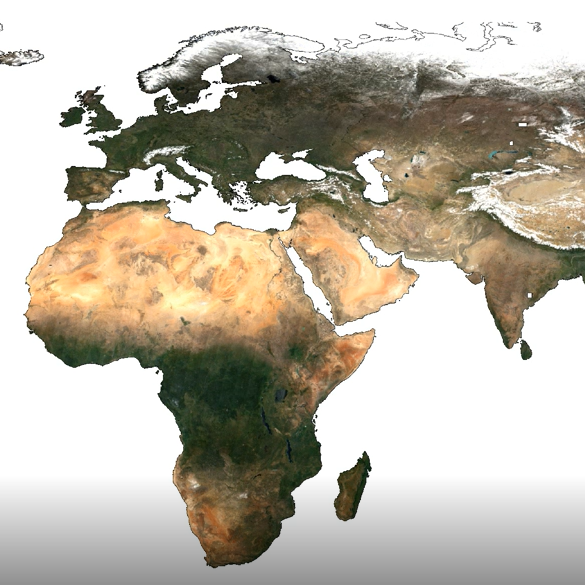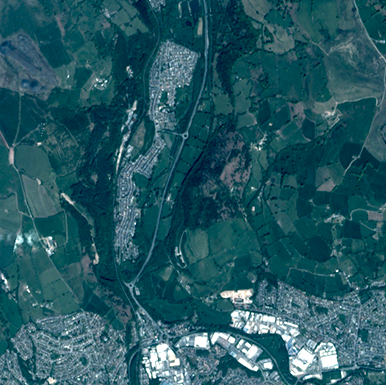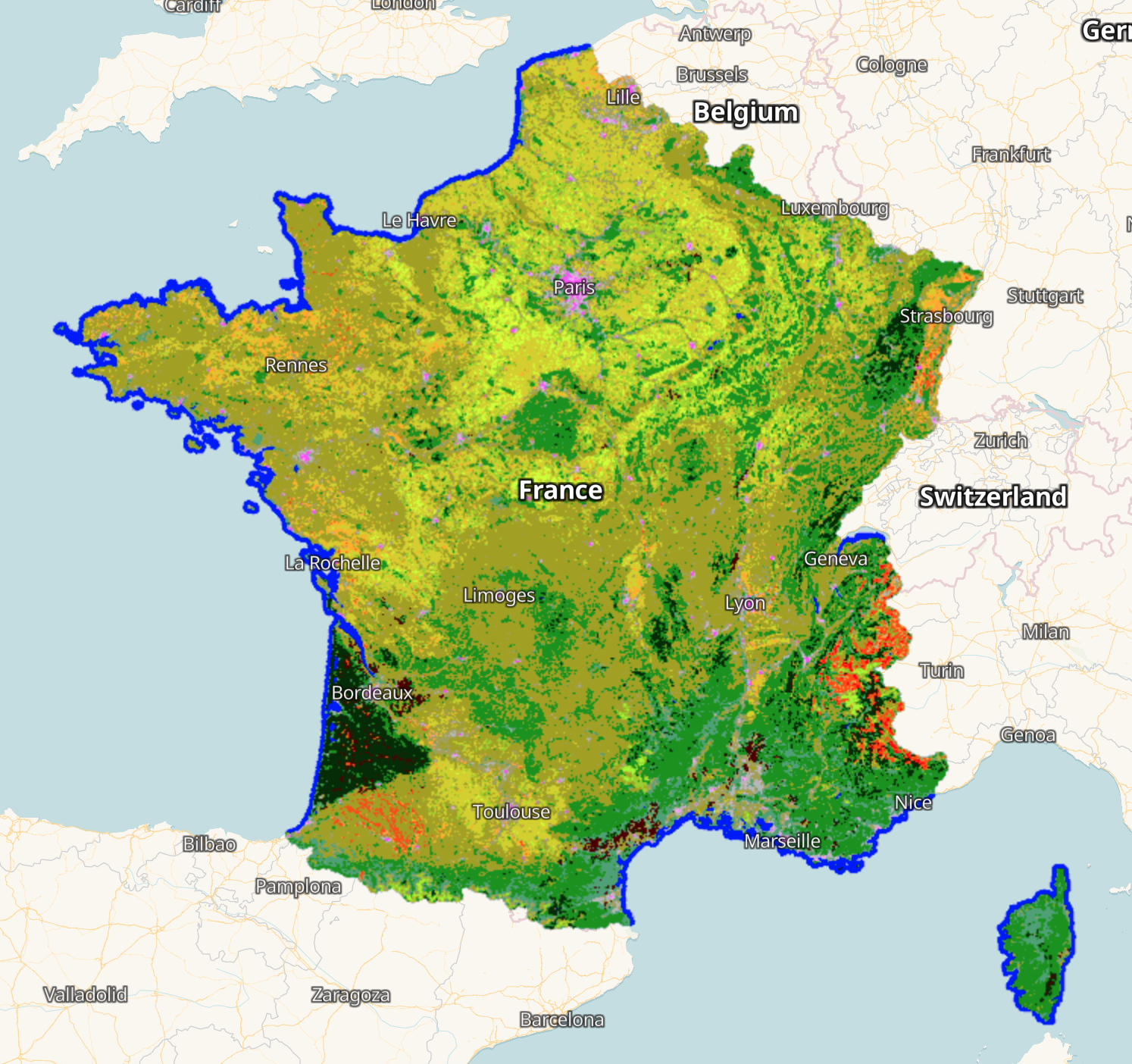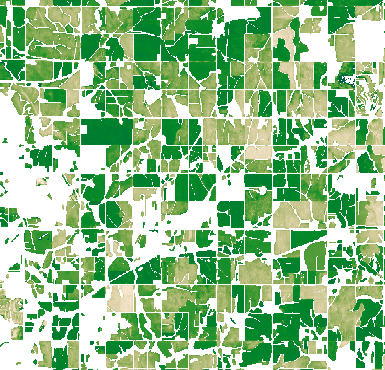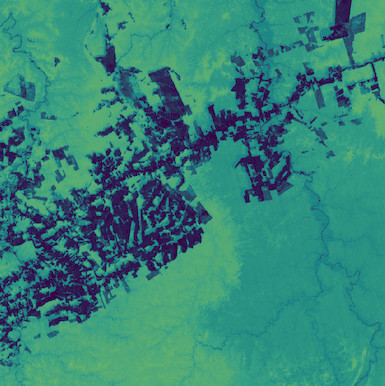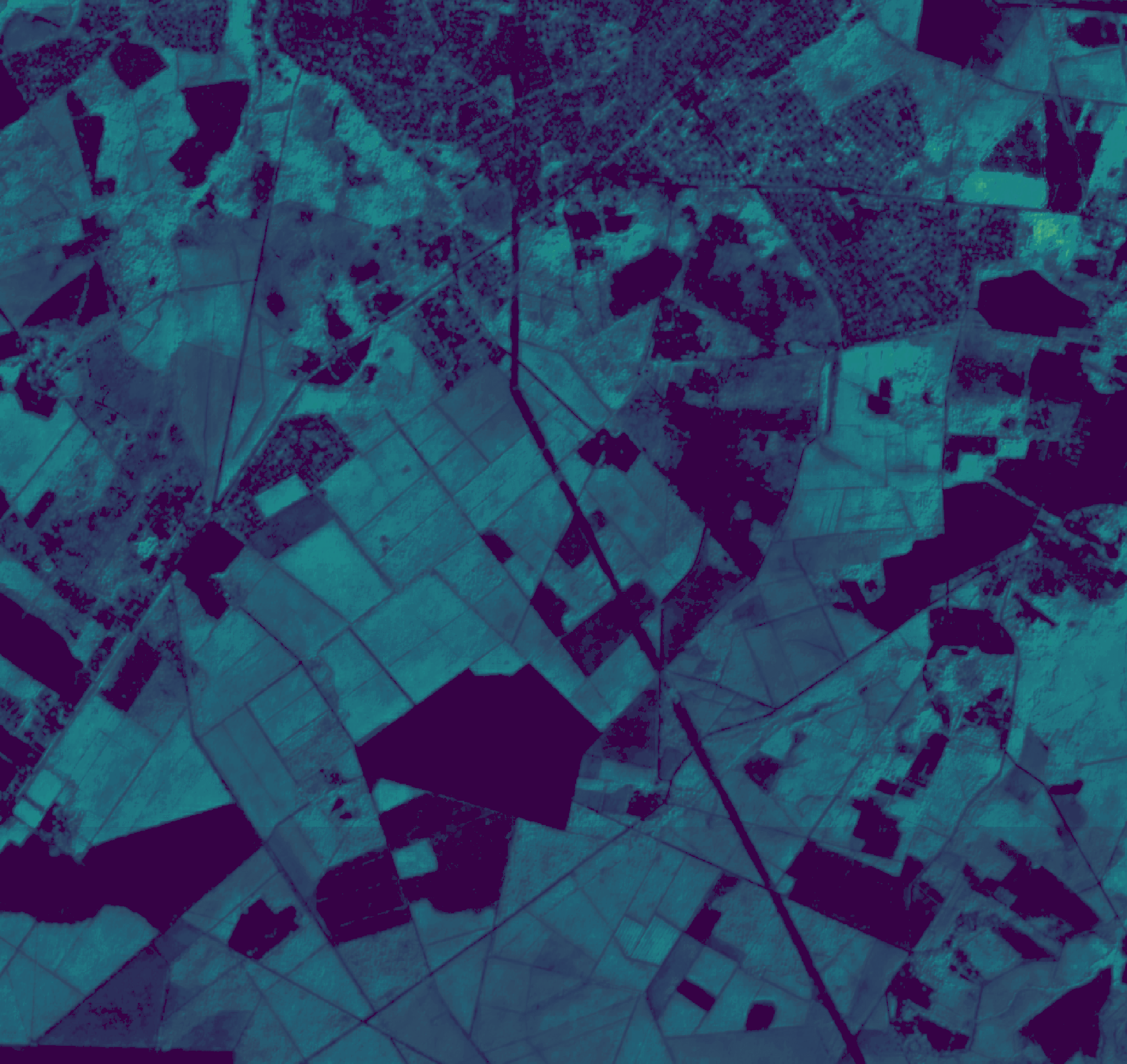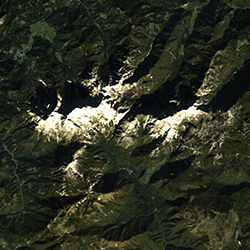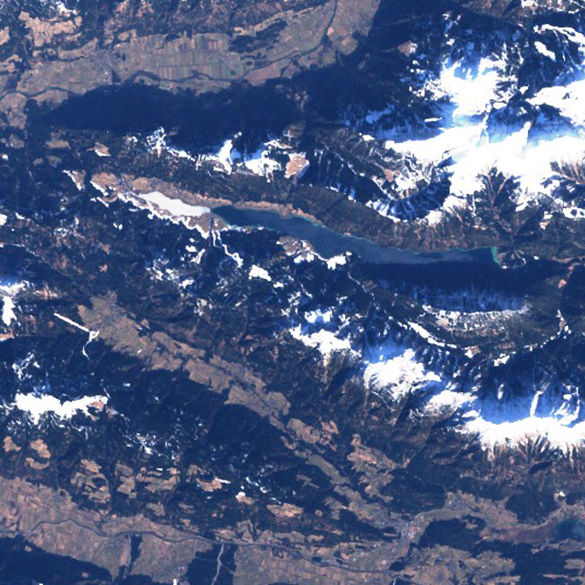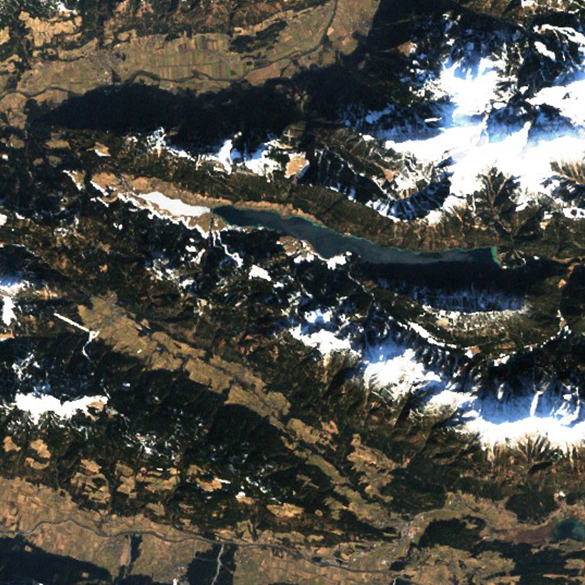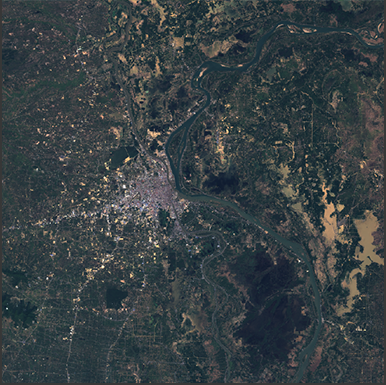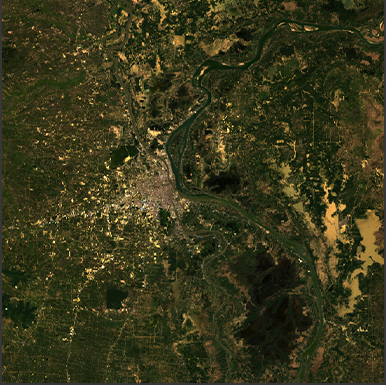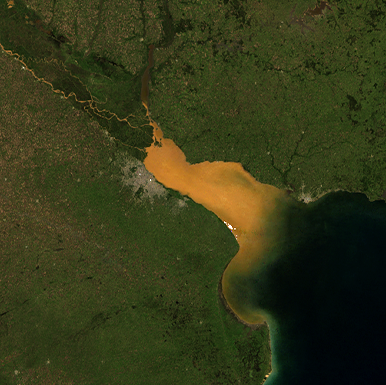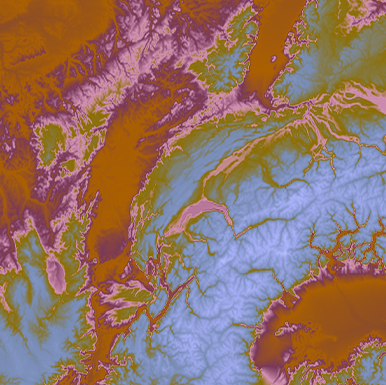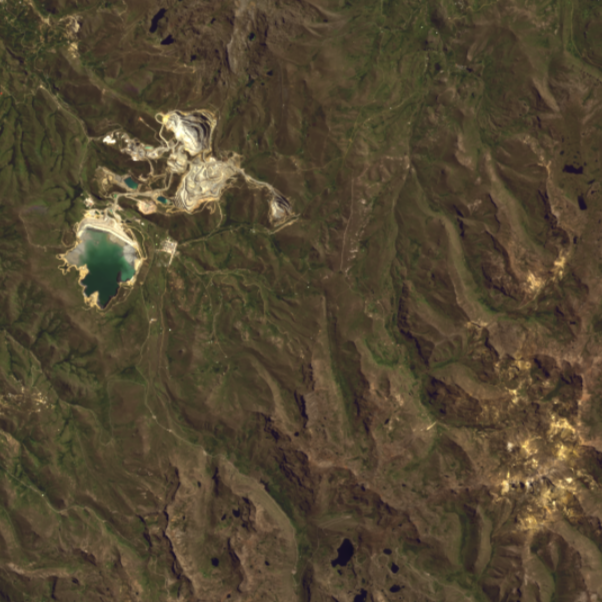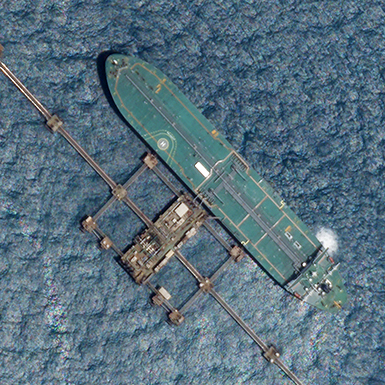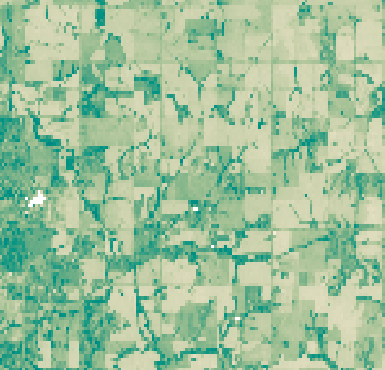About
This registry exists to help people discover and share collections that are available via Sentinel Hub.
Search collections (currently 13 matching collections)
Add to this registry
If you want to add a collection or example of how to use a collection to this registry, please follow the instructions on the Sentinel Hub Collections GitHub repository.
Unless specifically stated in the applicable collection's documentation, collections available through the Sentinel Hub Collections are not provided and maintained by Sentinel Hub. Collections are provided and maintained by a variety of third parties under a variety of licenses. Please check collection licenses and related documentation to determine if a collection may be used for your application.
Sentinel-2 L2A 120m Mosaic
agriculturemachine learningmulti spectral imageryopen datasatellite imagerysentinel
Sentinel-2 L2A 120m mosaic is a derived product, which contains best pixel values for 10-daily periods, modelled by removing the cloudy pixels and then performing interpolation among remaining values. As clouds can be missed and as there are some parts of the world which have lengthy cloudy periods, clouds might be remaining in some parts. The actual modelling script is available here.
Usage examples
10m Annual Land Use Land Cover (9-class)
derived dataland covermachine learningopen datarastersentinel hub
The 10m Annual Land Use Land Cover (LULC) map is produced Impact Observatory, Microsoft, and Esri collaboratively. The data collection is derived from ESA Sentinel-2 imagery at 10m resolution globaly using Impact Ovservatory's state of the art deep learning AI land classification model which is trained by billions of human-labeled image pixels. There are 9 LULC classes generated by the algorithm, including Built, Crops, Trees, Water, Rangeland, Flooded Vegetation, Snow/Ice, Bare Ground, and Clouds.
Analysis-Ready PlanetScope
analysis ready datacommercial dataplanetscopesandbox datasatellite imagerytime series
Analysis-Ready PlanetScope combines the monitoring benefits of near-daily 3 m spatial imagery, while enhancing temporal and spatial consistency by informing PlanetScope data with trusted, third-party data sources (Landsat, Sentinel-2, MODIS, VIIRS). This is accomplished with a proprietary algorithm that creates pre-processed, harmonized, and spatially consistent near-daily stacks of images that enable time-series analysis and machine learning applications. The resulting 4-band data is exceedingly radiometrically and geometrically accurate thanks to vast amounts of reference data in the Planet...
CNES Land Cover Map
derived dataland covermachine learningopen datarastersentinel hubsystematic
The CNES Land Cover Map (Occupation des Sols, OSO) produces land classification for Metropolitan France at 10 m spatial resolution based on Sentinel-2 L2A data within the Theia Land Cover CES framework. Maps for 2021, 2020, 2019, and 2018 use a 23-categories nomenclature. For earlier maps in 2017 and 2016, a fully compatible 17-classes nomenclature is employed.
Copernicus DEM
3Dcore collectionDEMelevationopen dataorthorectificationterrain
The Copernicus DEM is a Digital Surface Model (DSM) which represents the bare-Earth surface and all above ground natural and built features. It is based on WorldDEM™ DSM that is derived from TanDEM-X and is infilled on a local basis with the following DEMs: ASTER, SRTM90, SRTM30, SRTM30plus, GMTED2010, TerraSAR-X Radargrammetric DEM, ALOS World 3D-30m. Copernicus Programme provides Copernicus DEM in 3 different instances: COP-DEM EEA-10, COP-DEM GLO-30 and COP-DEM GLO-90 where "COP-DEM GLO-90" tiles and most of the "COP-DEM GLO-30 " tiles are available worldwide with fr...
Crop Biomass
agriculturebiomasscommercial dataopen dataplanetary variablessatellite imagery
Crop Biomass provides the ability to track and respond to the highly dynamic nature of biomass in agricultural fields throughout the season. This enables better-informed decisions, input optimization, interventions, and harvest planning. This is a relative measure of biomass, so each pixel value has a value of 0 (low biomass) to 1 (high biomass). The product is provided daily and every day, the user gets a new raster with the data from the most updated direct observation from the day before.
ESA WorldCover
agriculturebiodiversityderived dataland coveropen dataworldcover
The European Space Agency (ESA) WorldCover is a global land cover map with 11 different land cover classes produced at 10m resolution based on combination of both Sentinel-1 and Sentinel-2 data. In areas where Sentinel-2 images are covered by clouds for an extended period of time, Sentinel-1 data then provides complimentary information on the structural characteristics of the observed land cover. Therefore, the combination of Sentinel-1 and Sentinel-2 data makes it possible to update the land cover map almost in real time. WorldCover Map was first produced for 2020 using v100 of the algorit...
Forest Carbon Diligence
carbonchange detectionforestmappingMRVsandbox dataVCMvegetation monitoring
The Forest Carbon Diligence product consists of a bundle of data resources: canopy height, canopy cover, and aboveground live carbon with a spatial resolution of 30 m. These data are collected annually over the entire land mass of the Earth (between 75° N and 60° S).
Forest Carbon Monitoring
CarbonChangeForestMonitoringMRVsandbox dataVCM
The Forest Carbon Monitoring product consists of a bundle of data resources: canopy height, canopy cover, and aboveground live carbon with a spatial resolution of 3 m. These data are collected quarterly over the entire land mass of the Earth (between 75° N and 60° S).
Harmonized Landsat Sentinel
brightness temperaturecore collectionlandsatLULC changeLULC mappingnatural resourceopen datasatellite imagerysentinelvegetation monitoring
Harmonized Landsat Sentinel is a NASA initiative to produce a Virtual Constellation of surface reflectance (SR) data from the Operational Land Imager (OLI) and Multi-Spectral Instrument (MSI) aboard the Landsat 8-9 and Sentinel-2 remote sensing satellites, respectively. The combined measurement enables global observations of the land every 2–3 days. Input products are Landsat 8-9 Collection 2 Level 1 top-of-atmosphere reflectance and Sentinel-2 L1C top-of-atmosphere reflectance, which NASA radiometrically harmonizes to the maximum extent, resamples to common 30-meter resolution, and grids usin...
Land Surface Temperature
agriculturecommercial dataplanetary variablessandbox datasatellite imagerythermal
Planet’s Land Surface Temperature (LST) is a feed of high-resolution, globally available measurement of the skin temperature of the Earth. Combining observations from a range of satellite constellations, Land Surface Temperature is not hindered by clouds, ensuring a continuous, consistent and scientifically reliable data record of more than 20 years. Consequently, there is no requirement to uphold extensive networks of physical sensors. This Planetary Variable measures the temperature twice a day (daytime and nighttime) with a spatial resolution of 100 m and 1000 m, providing vital intelligenc...
Landsat 1-5 MSS L1
core collectionlandsatLULC changeLULC mappingnatural resourceopen datasatellite imageryvegetation monitoring
The Landsat Multispectral Scanner System (MSS) sensors were carried onboard Landsats 1 to 5. It provides 4 spectral bands. See USGS EROS Archive for more information. MSS Level-1 data provides Top of Atmosphere Reflectance products for the period from July 1972 to October 1992 and from June 2012 to January 2013.
Landsat 4-5 TM L1
core collectionlandsatLULC changeLULC mappingnatural resourceopen datasatellite imagerysurface temperaturevegetation monitoring
The Landsat Thematic Mapper (TM) sensor was carried onboard Landsats 4 and 5. TM collected data in 7 spectral bands; from the blue, green, red, near-infrared, mid-infrared (2) and thermal infrared portions of the electromagnetic spectrum. Visit USGS EROS Archive - Landsat Archives - Landsat 4-5 Thematic Mapper Collection 2 Level-1 Data webpage for more information.
Landsat 4-5 TM L2
core collectionlandsatLULC changeLULC mappingnatural resourceopen datasatellite imagerysurface temperaturevegetation monitoring
The Landsat Thematic Mapper (TM) sensor was carried onboard Landsats 4 and 5. TM collected data in 7 spectral bands; from the blue, green, red, near-infrared, mid-infrared(2) and thermal infrared portions of the electromagnetic spectrum. L2 data include Surface Reflectance and Surface Temperature scene-based products. Visit USGS EROS Archive - Landsat Archives - Landsat 4-5 TM Collection 2 Level-2 Science Products for more information.
Landsat 7 ETM+ L1
brightness temperaturecore collectionlandsatLULC changeLULC mappingnatural resourceopen datasatellite imageryvegetation monitoring
The Landsat 7 Enhanced Thematic Mapper (ETM+) sensor is carried onboard Landsat 7. ETM+ provides 7 spectral bands and 1 thermal band. See USGS EROS Archive for more information. Landsat 7 Level-1 data provides Top of Atmosphere Reflectance and Top of the Atmosphere Brightness Temperature products. Level 1 data are available since April 1999. All scenes collected since May 30, 2003 have data gaps due to the Scan Line Corrector (SLC) failure.
Landsat 7 ETM+ L2
core collectionlandsatLULC changeLULC mappingnatural resourceopen datasatellite imagerysurface temperaturevegetation monitoring
The Landsat 7 Enhanced Thematic Mapper (ETM+) sensor is carried onboard Landsat 7. ETM+ provides 7 spectral bands and 1 thermal band. See USGS EROS Archive for more information. Landsat 7 level-2 data provides atmospherically corrected Surface Reflectance and Surface Brightness Temperature products. Level-2 data are available since April 1999.
Landsat 8-9 L1
core collectionlandsatLULC changeLULC mappingnatural resourceopen datasatellite imagerysurface temperaturevegetation monitoring
Landsat 8-9 Level 1 collection includes both Landsat 8 and the most recently launched Landsat 9 satellites (provided by NASA/USGS), both carrying the Operational Land Imager (OLI) and the Thermal Infrared Sensor (TIRS) instruments, with 9 optical and 2 thermal bands. These two sensors provide seasonal coverage of the global landmass. Landsat 8-9 Level 1 data from the most recently released collection 2, provides Top of Atmosphere Reflectance and Top of the Atmosphere Brightness Temperature products. Level 1 data are available since February 2013 for Landsat 8 and since January 2022 for La...
Landsat 8-9 L2
core collectionlandsatLULC changeLULC mappingnatural resourceopen datasatellite imagerysurface temperaturevegetation monitoring
Landsat 8-9 Level 2 collection includes both Landsat 8 and the most recently launched Landsat 9 satellites (provided by NASA/USGS), both carrying the Operational Land Imager (OLI) and the Thermal Infrared Sensor (TIRS) instruments, with 9 optical and 2 thermal bands. These two sensors provide seasonal coverage of the global landmass. Landsat 8-9 Level 2 data from the most recently released collection 2, provides atmospherically corrected Surface Reflectance and Surface Brightness Temperature products generated from Collection 2 Level-1 scenes that have been processed to Tier 1 or Tier 2. C...
MODIS MCD43A4.006
agriculturecore collectiondisaster responsenatural resourceopen datasatellite imagery
MODIS (Moderate Resolution Imaging Spectroradiometer) is the main instrument operating on both NASA's Terra and Aqua satellites. It acquires images of the earth in 36 bands within the visible and the infrared regions of the spectrum at low to medium spatial resolutions. MODIS is designed to provide atleast daily observations of land, oceans and lower atmosphere that contribute to local or global scale land or water applications. There are several products derived from MODIS which include land, atmosphere, cryospehere and ocean products. MCD43A4 Nadir BRDF-Adjusted Reflectance (NBAR) produ...
Mapzen DEM
3Dcore collectionDEMelevationopen dataorthorectificationterrain
Mapzen DEM is based on Mapzen's terrain tiles that provide global DEM and bathymetry data. Mapzen terrain tiles is a composite of elevation data of varying resolutions from multiple open data sources including Details →
Planet Basemaps
analysis ready datacommercial datahigh resolution imagerymappingmosaicplanetscopesandbox datasatellite imageryvegetation monitoring
Globally available mosaics at a cell size of 4.77 m (at equator) using Mercator projection. Planet Basemaps are offered at a weekly, biweekly, monthly, or quarterly cadence and provide a clear, comprehensive view of an area of interest by automating the selection of the best individual images to create a complete, seamless, and recent “mosaic” that allows you to understand change over broad areas. Planet Basemaps are also well suited for machine learning-analytics by applying cloud masking and radiometric no...
PlanetScope
agriculturecommercial datahigh resolution imagerymappingmulti spectral imagerysandbox datasatellite imageryvegetation monitoring
With hundreds of Dove satellites in orbit, PlanetScope Monitoring provides a medium-resolution, continuous, and complete view of the world from above, every day. PlanetScope images are approximately 3 m per pixel resolution. Sentinel Hub offers the ability to purchase, order and access both the archive data and newly acquired data available globally since 2016. Sentinel Hub provides access to PlanetScope data in Top of the atmosphere (TOA) reflectance.
Road and Building Detection
analyticsbuilding detectioncommercial datahigh resolution imageryland covermappingplanetscoperoad detectionsandbox data
Globally available land cover maps derived from Planetscope imagery classifying pixels as road, building or neither. Generated on a weekly or monthly basis, Planet's Road & Building Detection can be used to stay up to date with the latest development around the globe.
By leveraging a semantic segmentation model on all the PlanetScope imagery published in a given area for a given week or month, we assign a probability value (0-255) that the pixel represents a road, building or neither object.
These results are aggregated together into a weekly or monthly layer and this process is rep...
Sentinel-1 GRD
core collectiondisaster responseland monitoringmaritime monitoringopen dataSARsatellite imagerysentinel
The Sentinel - 1 radar imaging mission is composed of a constellation of two polar-orbiting satellites providing continous all-weather, day and night imagery for Land and Maritime Monitoring. C-band synthentic aperture radar imaging has the advantage of operating at wavelenghts that are not obstructed by clouds or lack of illumination and therefore can acquire data during day or night under all weather conditions. With 6 days repeat cycle on the entire world and daily acquistions of sea ice zones and Europe's major shipping routes, Sentinel-1 ensures reliable data availability to support...
Sentinel-2 L1C
agriculturecore collectiondisaster responsemulti spectral imagerynatural resourceopen datasatellite imagerysentinel
The Sentinel-2 mission is a land monitoring constellation of two satellites that provide high resolution optical imagery and provide continuity for the current SPOT and Landsat missions. The mission provides a global coverage of the Earth's land surface every 5 days, making the data of great use in on-going studies. L1C data are available from June 2015 globally. L1C data provide Top of the atmosphere (TOA) reflectance.
Sentinel-2 L2A
agriculturecore collectiondisaster responsemulti spectral imagerynatural resourceopen datasatellite imagerysentinel
The Sentinel-2 mission is a land monitoring constellation of two satellites that provide high resolution optical imagery and provide continuity for the current SPOT and Landsat missions. The mission provides a global coverage of the Earth's land surface every 5 days, making the data of great use in on-going studies. L2A data are available from November 2016 over Europe region and globally since January 2017. L2A data provide Bottom of the atmosphere (BOA) reflectance.
SkySat
agriculturecommercial datahigh resolution imagerymappingmulti spectral imagerysandbox datasatellite imageryvegetation monitoring
Planet's extensive Skysat archive is available at 50 cm spatial resolution for images collected on or after June 30, 2020, and at 72 cm spatial resolution for images collected before June 30, 2020. The SkySat image archive dates back to 2014. The Skysat satellite constellation consists of ~20 satellites that were launched between 2013 and 2020. Because of its rapid revisit time, these data are suitable for monitoring rapid changes on the Earth's surface.
Soil Water Content
agriculturecommercial datadroughtplanetary variablessandbox datasatellite imagery
The Soil Water Content is the measure of the amount of water present in a unit volume of soil. It is typically expressed as a percentage and represents the ratio between the volume of water and the total volume of the soil. This measurement is crucial for understanding the water status of the soil and provides information on factors such as drought monitoring, soil health and hydrological processes. The Soil Water Content Planetary Variable measures the water content of the soil almost daily with a spatial resolution of 100 m and 1000 m. It is not affected by clouds and has a long and cons...
WorldView (+ GeoEye )
commercial datadefensedisaster responsehigh resolution imagerymappingmaritime monitoringmulti spectral imagery
Maxar Technologies offers multi-spectral, high resolution, commercial satellite imagery acquired by currently four on-orbit and three retired constellation of satellites namely WorldView, GeoEye, QuickBird and IKONOS. Sentinel Hub offers a possibility to purchase, order and access Worldview and Geoeye satellite imagery ordered through European Space Imaging. The data available for purchase through Sentinel Hub are GeoEye-1 (GE01), WorldView-2 (WV02), WorldView-3 (WV03) and WorldView-4 (WV04). WorldView-4 data available for purchase is the imagery archive acquired from November 2016 to Janua...
